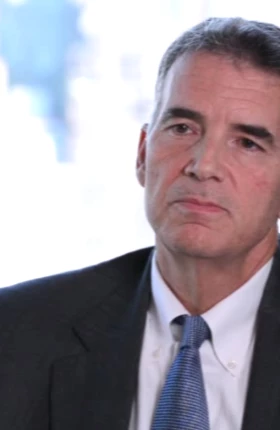Rich, thanks for being here today. I really look forward to our discussion.
I'm happy to be here. It's great.
As D&B’s CFO, what do you view as your mandate to lead D&B today and in the years ahead?
Very simply, the primary mandate of the CFO role—I believe at any company, but in particular at Dun & Bradstreet—is to be the champion of total shareholder return (TSR). By that, I mean that my role is to look at everything that we do, every decision that we make, every business that we enter, through the lens of shareholder value. That’s the only way to make sure that, in the long run, everything you do is ultimately beneficial for shareholders.
What are the key drivers of TSR that you see at D&B?
At the core, I believe there are three primary drivers of TSR. The first is around driving continuous, strong revenue growth—and you do that primarily through great innovation and strong execution. The second driver is making sure that the revenue you create is actually coming in with a high level of profitability. And then the third is strong capital stewardship. At the end of the day, the cash that you generate needs to be used wisely, otherwise it won’t ultimately create long-term shareholder value.
Let's dive into each of those three areas.
Let me start with the top line. As I said, the first thing that you really need to do in terms of creating shareholder value is to drive sustainable revenue growth. People don't immediately think of the CFO as the enabler of revenue growth, but really, at the end of the day, our mandate is to make sure that everything that we do creates value; so we play a pretty significant role in making sure that the company is using its assets wisely to drive that growth. The primary function is around portfolio analysis and optimal resource utilization: making sure that we use the company’s assets in the initiatives that have the best growth potential.
Now once you have revenue growth, you have to actually make sure that it’s coming in at a strong margin, because ultimately revenue's only going to mean something if there is strong profitability attached to it. So one of the mandates that I see myself as holding as the CFO is to make sure that I’m taking a look at our cost base—how we do things better, cheaper, faster—and making sure that the investments that we make actually pay out.
That leads to the third key driver of TSR: strong capital stewardship. Quite simply, that means making sure that the cash that you generate through your profitable revenue growth is ultimately used wisely. That’s a big part of what I spend my time on—looking at our capital allocation, making sure that we’re using that capital optimally.
Prior to becoming CFO in 2011, you were the chief strategy officer of D&B. How did that role help you prepare for the challenges and the opportunities that you have faced in your time as CFO and, as you look ahead, that you will face over the next several years?
The interesting thing about strategy is that it is so focused on making the right choices to drive long-term, sustainable TSR. If I really think about the mandate for the CFO, it is very akin to that. It really is about making the right choices that will increase long-term shareholder value. There is just a slightly different angle on it.
It has been a busy first couple of years for you as CFO. What has surprised you the most about the CFO role?
I don't know if it’s as much surprising as exciting, but the CFO role is so much at the nexus of everything that is going on in the company. When you’re coming up through the ranks, you think that it is the ultimate finance role, that you are going to be spending your time thinking about the financials and then driving the financials. But, you know, in the seat—that’s just one piece. There’s a big strategic element; there’s a big partnering element; there’s a very substantial external element, where you’re spending time with the banks, you’re spending time with investors. All these different dimensions of the role are exciting, but they require different skills and a different type of leadership. So I'd say, ultimately, for me, that multidimensionality has been the most exciting part of it. There are so many different skills in the tool bag that you need to bring, and which you use in any particular moment very much depends on the situation.
Rich, as always, it’s been a pleasure. Thank you for your time and for sharing your insights and perspectives.
It’s great to be here, Jeff; always good to talk to you.






